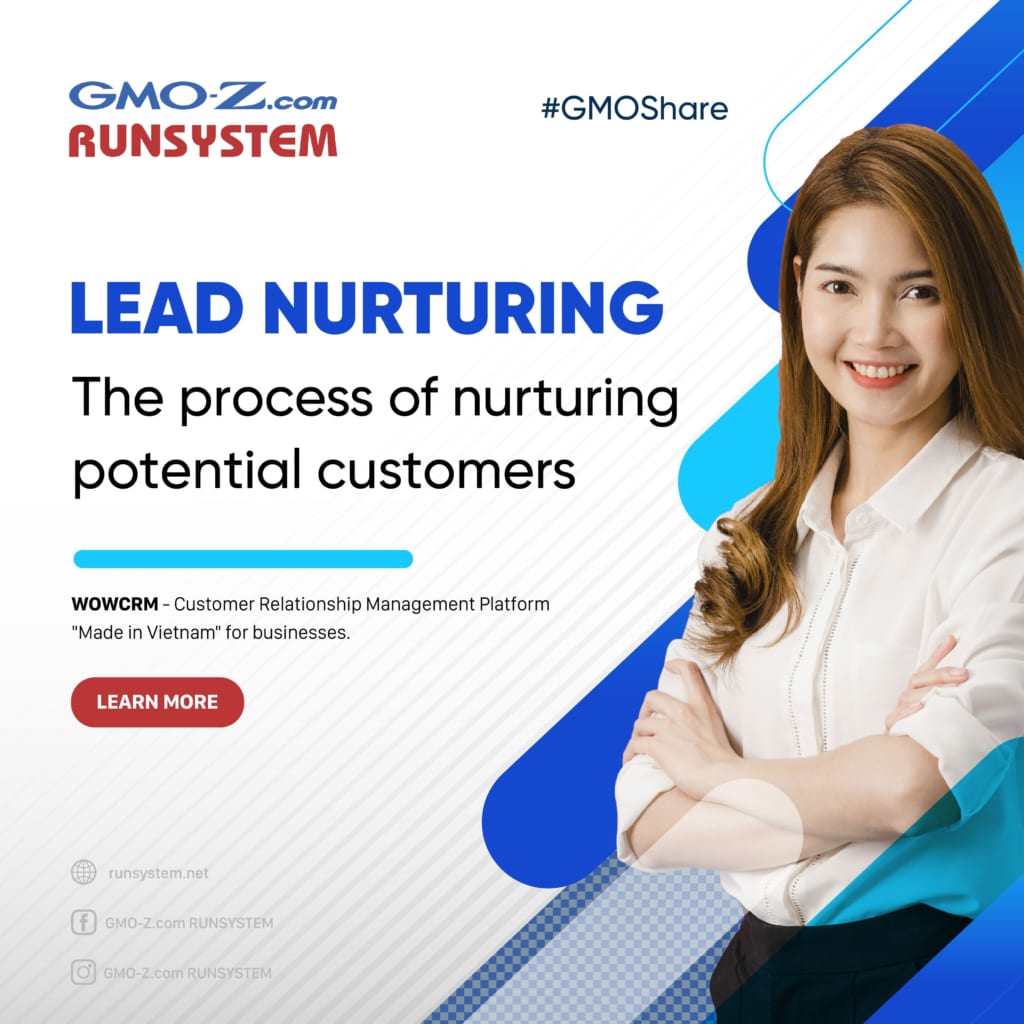Lead Nurturing means nurturing potential customers – the process in which businesses nurture and convert potential customers (those who may or may not need our products or services) into actual customers who complete transactions.
Lead Nurturing is a process that involves various activities in different forms, such as creating valuable content Blogs, sending nurturing Email Marketing to potential customers, offering trial products, giving gifts, or inviting potential customers to product/service introduction events. One thing is sure, Lead Nurturing is a time-consuming process that requires effort, and businesses must define their objectives and develop specific and detailed plans.
By building and implementing effective Lead Nurturing campaigns, businesses gain attraction and positive sentiment from potential customers while improving their ability to close sales of their products or services. After customers make a purchase, companies continue to use various methods to support, interact, and provide post-purchase assistance to prolong the relationship and foster customer loyalty. Therefore, Lead Nurturing helps businesses find new customers and effectively retain existing customers.

After understanding the concept of Lead Nurturing, a question that businesses often ask is what are the benefits of Lead Nurturing. The Lead Nurturing process brings five key benefits to businesses:
The first benefit of Lead Nurturing is that it helps businesses establish strong relationships with their customers. Lead Nurturing helps potential customers learn more about the business’s brand, products, and services.
Being flexible in sales with effective communication, interaction, and a warm, intelligent, and humorous approach helps businesses succeed more than rigid and stereotypical interactions.
Nurturing potential customers helps increase charges for the company. Over 95% of users who visit a business website leave without making a purchase, and they often need to provide contact information. By providing valuable content to nurture leads, businesses can keep potential customers on their website longer and increase conversion rates.
Businesses should understand that not all leads will convert into actual customers. According to a study by Marketing Sherpa, up to 79% of leads will never convert into specific sales revenue. Around 61% of B2B businesses admit that a lack of lead nurturing processes is why they failed to convert leads into actual customers.
Lead Nurturing and Marketing Automation support businesses in effectively nurturing their leads. Sales teams should focus on approaching high-quality leads to increase the chances of closing deals. Additionally, random cold calls that yield little results should be eliminated, saving time and effort to focus on genuine sales opportunities.
Lead Nurturing contributes to the development of the business brand. Nurturing potential customers involves creating valuable content on websites, blogs, and social media posts. These efforts build customer trust in our products and services, enhancing the brand’s overall development.
When potential customers interact with the business across touchpoints, valuable information can be collected for analysis to improve the customer journey. With this valuable data, companies can deploy Marketing Automation campaigns and personalize automated nurturing campaigns for potential customers, saving significant human resources and budget. Moreover, this data helps businesses better understand their customers, contributing to improving the content provided on websites, blogs, and social media platforms.

Next, we will explore the lead nurturing stages, which aim to cultivate potential customers.
In the initial step of the nurturing customer process, when they are in a specific market, businesses need to find ways to connect with customers through:
In stage 1, companies will use the Visitor metric to measure the achieved effectiveness. Once the target customers are identified, various marketing methods will be implemented to impact and attract these individuals, leading them to our website. At this point, they become Visitors. The more Visitors, the more target customers the business has reached, indicating the campaign’s success. Next, the company will initiate campaigns to make the target customers interested in their products, services, and brand.
Once Leads have connected with the business, recognized its credibility, and trusted the values it offers, they will remember the company for the first time.
Frequent and continuous interaction with Leads Ensuring the presence of the business image across all channels Implementing remarketing or customer retargeting ads Collecting Leads through a single source (such as website, fan page, group, etc.) After Leads have made initial assessments, the business will nurture them. In order to convert Leads, the company needs to utilize Lead Scoring – a method of assessing the quality of Leads based on various attributes. The Lead Scoring process of a business includes:
Evaluating and scoring Leads based on specific criteria Ranking these evaluation criteria according to the business’s priorities The company will filter out highly scored customers to prioritize nurturing, as they represent the most significant potential customers.
In the third stage of the nurturing customer process, the business will implement a “bait product” strategy with customers through:
Trial products Affordable introductory products Promotions Participation gifts in mini-games Workshops or training sessions The business needs to store complete information and data of all customers during this “bait product” strategy to apply in the next stage.
After customers have received value from the business, such as purchasing some trial products at a low price, indicating their “purchase behavior,” the company will approach and convert them into actual customers who buy our products or services. Some conversion activities include:
The business must ensure not to overlook customers during this stage and make the most appropriate “conversion step” for each customer segment.
The customer nurturing process is when customers spend money to purchase products or services and have high expectations. The business needs to help customers see the excellent value they receive from the products or services through care and support to retain them with the brand. The company can also provide good after-sales policies to help customers remain loyal to the company in the long term. The company needs to have a good grasp of certain information in this stage, such as:
Referral means a customer who is satisfied with the business and is willing to recommend, advise, and share positive experiences with their acquaintances, friends, and family. Referrals are the ones who will advertise the business for free. The company needs to have a good grasp of certain information in this stage, such as:




